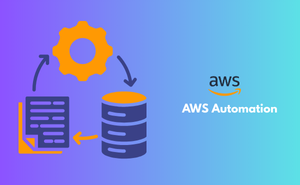👇 CELEBRATE CLOUD SECURITY DAY 👇
00
HOURS
00
MINUTES
00
SECONDS

AWS Automation refers to the practice of managing cloud infrastructure and applications on AWS without manual intervention. By using tools such as AWS CloudFormation, AWS Systems Manager, and Lambda, users can automate repetitive jobs like provisioning servers, configuring resources, or applying updates. This creates a streamlined and error-free way to manage large-scale systems.
With AWS Automation, organizations gain efficiency and consistency. Developers and cloud engineers no longer need to repeat the same setup tasks, as automation scripts take care of them. This not only improves productivity but also enhances reliability, making cloud systems easier to maintain and scale.
This exam is ideal for:
Domain 1 - Introduction to AWS Automation
Domain 2 - Infrastructure as Code (IaC)
Domain 3 - AWS Systems Manager
Domain 4 - Serverless Automation
Domain 5 - Continuous Integration and Continuous Deployment (CI/CD)
Domain 6 - Monitoring and Scaling
Domain 7 - Security and Compliance Automation
Industry-endorsed certificates to strengthen your career profile.
Start learning immediately with digital materials, no delays.
Practice until you’re fully confident, at no additional charge.
Study anytime, anywhere, on laptop, tablet, or smartphone.
Courses and practice exams developed by qualified professionals.
Support available round the clock whenever you need help.
Easy-to-follow content with practice exams and assessments.
Join a global community of professionals advancing their skills.
Cloud engineers, DevOps specialists, and IT professionals aiming to automate AWS workflows.
Yes, basic familiarity with AWS services is recommended.
Some scripting knowledge (Python, Bash, or JSON/YAML) is useful.
Faster, more reliable, and consistent cloud operations.
Yes, it handles repetitive tasks, reducing human error.
Finance, healthcare, retail, e-commerce, and IT services.
CloudFormation, Systems Manager, Lambda, and CodePipeline.
No, startups and small businesses also benefit from efficiency and cost savings.
Yes, including IAM policies and compliance automation.
Yes, CloudFormation and CDK are core parts of the syllabus.
Absolutely, as automation is central to DevOps practices.
Yes, it integrates with on-premises and hybrid environments.
Yes, with CloudWatch, auto scaling, and event-driven triggers.
It makes candidates highly valuable for cloud, DevOps, and automation-focused roles.
Yes, automation is a core trend in cloud computing and will only grow in importance.